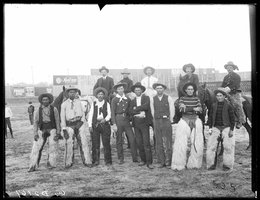


Nebraska and other western states may have been attractive to African Americans because there were millions of acres of free land for black farmers to claim. Also, though there was some slavery early on, Nebraska was known to be a safe haven for blacks, not just tolerant of them. So, African American settlers began moving into the plains states. They began in Kansas, and were known as the “Exodusters.” During the early summer of 1879, a small group of exodusters arrived in Lincoln. Others moved to Omaha and Nebraska City.

In 1870, there were 789 African Americans living in Nebraska. That number exploded to 8,900 by 1890.


The Jerry Shores family and their relatives the Speeses, lived near Westerville in Custer County. Jerry was a former slave. He took a claim next to his brothers, Moses Speese and Henry Webb (each had taken the name of his former owner).
Ava Speese Day, a relative of the Shores family, remembered hearing the story of her grandfather leading his family in search of land in Nebraska. He led the first black “emigrant train” to Cherry County. “He drove one of his three wagons,” Ava recounted years later. “His son Den drove another, and my mother Rosetta drove the third. She took care of her own team, greased the wagon wheels, and she was just turned 16.”
Discussion Questions:
What were a pull factors for African Americans to migrate to Nebraska?
What were the push factors for African Americans to leave their homes?
Which of these factors are social, which environmental, which economic? Explain.